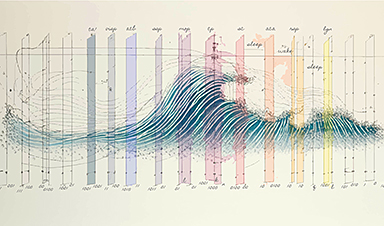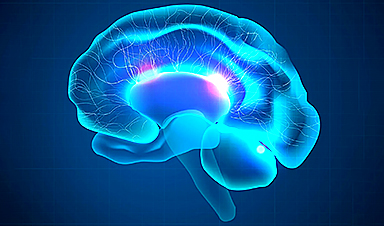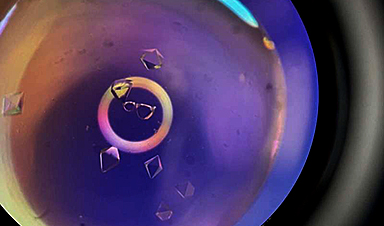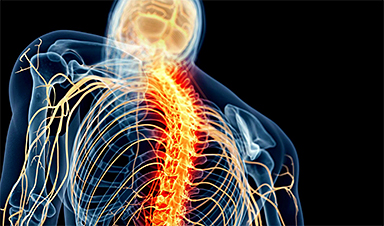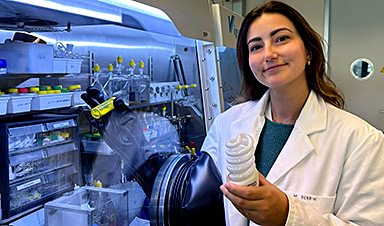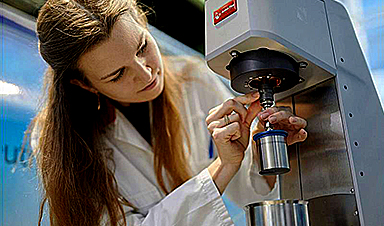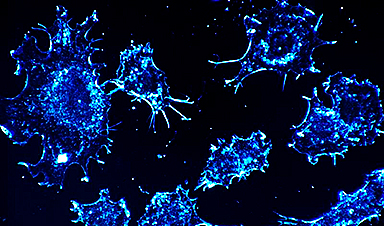NASA is actively monitoring a strange anomaly in Earth’s magnetic field: a giant region of lower magnetic intensity in the skies above the planet, stretching out between South America and southwest Africa.
The space agency’s satellites and spacecraft are particularly vulnerable to the weakened magnetic field strength within the anomaly, and the resulting exposure to charged particles from the Sun.
The South Atlantic Anomaly (SAA) – likened by NASA to a ‘dent’ in Earth’s magnetic field, or a kind of ‘pothole in space’ – generally doesn’t affect life on Earth, but the same can’t be said for orbital spacecraft (including the International Space Station), which pass directly through the anomaly as they loop around the planet at low-Earth orbit altitudes.
During these encounters, the reduced magnetic field strength inside the anomaly means technological systems onboard satellites can short-circuit and malfunction if they become struck by high-energy protons emanating from the Sun.
These random hits may usually only produce low-level glitches, but they do carry the risk of causing significant data loss, or even permanent damage to key components – threats obliging satellite operators to routinely shut down spacecraft systems before spacecraft enter the anomaly zone.
Mitigating those hazards in space is one reason NASA is tracking the SAA; another is that the mystery of the anomaly represents a great opportunity to investigate a complex and difficult-to-understand phenomenon, and NASA’s broad resources and research groups are uniquely well-appointed to study the occurrence.
The primary source is considered to be a swirling ocean of molten iron inside Earth’s outer core, thousands of kilometers below the ground. The movement of that mass generates electrical currents that create Earth’s magnetic field, but not necessarily uniformly, it seems.
A huge reservoir of dense rock called the African Large Low Shear Velocity Province, located about 2,900 kilometers (1,800 miles) below the African continent, disturbs the field’s generation, resulting in the dramatic weakening effect – which is aided by the tilt of the planet’s magnetic axis.
“The observed SAA can be also interpreted as a consequence of weakening dominance of the dipole field in the region,” said NASA Goddard geophysicist and mathematician Weijia Kuang in 2020.
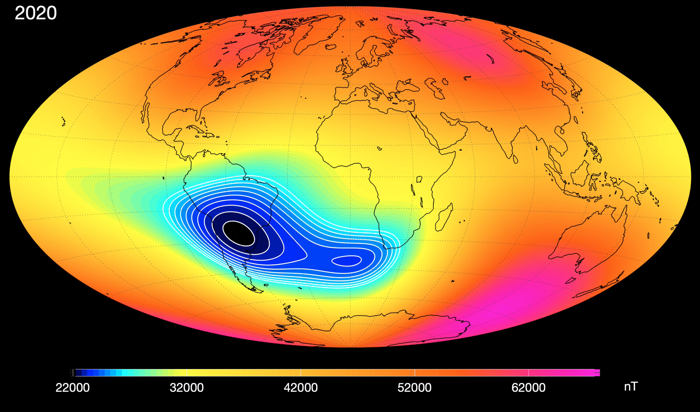
While there’s much scientists still don’t fully understand about the anomaly and its implications, new insights are continually shedding light on this strange phenomenon.
For example, one study led by NASA heliophysicist Ashley Greeley in 2016 revealed the SAA is drifting slowly in a north-westerly direction.
It’s not just moving, however. Even more remarkably, the phenomenon seems to be in the process of splitting in two, with researchers in 2020 discovering that the SAA appeared to be dividing into two distinct cells, each representing a separate center of minimum magnetic intensity within the greater anomaly.
A study published in July 2020 suggested the phenomenon is not a freak event of recent times, but a recurrent magnetic event that may have affected Earth since as far back as 11 million years ago.
If so, that could signal that the South Atlantic Anomaly is not a trigger or precursor to the entire planet’s magnetic field flipping, which is something that actually happens, if not for hundreds of thousands of years at a time.
Obviously, huge questions remain, but with so much going on with this vast magnetic oddity, it’s good to know the world’s most powerful space agency is watching it as closely as they are.
“Even though the SAA is slow-moving, it is going through some change in morphology, so it’s also important that we keep observing it by having continued missions,” said Sabaka.
“Because that’s what helps us make models and predictions.”
News
The Silent Battle Within: How Your Organs Choose Between Mom and Dad’s Genes
Research reveals that selective expression of maternal or paternal X chromosomes varies by organ, driven by cellular competition. A new study published today (July 26) in Nature Genetics by the Lymphoid Development Group at the MRC [...]
Study identifies genes increasing risk of severe COVID-19
Whether or not a person becomes seriously ill with COVID-19 depends, among other things, on genetic factors. With this in mind, researchers from the University Hospital Bonn (UKB) and the University of Bonn, in [...]
Small regions of the brain can take micro-naps while the rest of the brain is awake and vice versa
Sleep and wake: They're totally distinct states of being that define the boundaries of our daily lives. For years, scientists have measured the difference between these instinctual brain processes by observing brain waves, with [...]
Redefining Consciousness: Small Regions of the Brain Can Take Micro-Naps While the Rest of the Brain Is Awake
The study broadly reveals how fast brain waves, previously overlooked, establish fundamental patterns of sleep and wakefulness. Scientists have developed a new method to analyze sleep and wake states by detecting ultra-fast neuronal activity [...]
AI Reveals Health Secrets Through Facial Temperature Mapping
Researchers have found that different facial temperatures correlate with chronic illnesses like diabetes and high blood pressure, and these can be detected using AI with thermal cameras. They highlight the potential of this technology [...]
Breakthrough in aging research: Blocking IL-11 extends lifespan and improves health in mice
In a recent study published in the journal Nature, a team of researchers used murine models and various pharmacological and genetic approaches to examine whether pro-inflammatory signaling involving interleukin (IL)-11, which activates signaling molecules such [...]
Promise for a universal influenza vaccine: Scientists validate theory using 1918 flu virus
New research led by Oregon Health & Science University reveals a promising approach to developing a universal influenza vaccine—a so-called "one and done" vaccine that confers lifetime immunity against an evolving virus. The study, [...]
New Projects Aim To Pioneer the Future of Neuroscience
One study will investigate the alterations in brain activity at the cellular level caused by psilocybin, the psychoactive substance found in “magic mushrooms.” How do neurons respond to the effects of magic mushrooms? What [...]
Decoding the Decline: Scientific Insights Into Long COVID’s Retreat
Research indicates a significant reduction in long COVID risk, largely due to vaccination and the virus’s evolution. The study analyzes data from over 441,000 veterans, showing lower rates of long COVID among vaccinated individuals compared [...]
Silicon Transformed: A Breakthrough in Laser Nanofabrication
A new method enables precise nanofabrication inside silicon using spatial light modulation and laser pulses, creating advanced nanostructures for potential use in electronics and photonics. Silicon, the cornerstone of modern electronics, photovoltaics, and photonics, [...]
Caught in the actinium: New research could help design better cancer treatments
The element actinium was first discovered at the turn of the 20th century, but even now, nearly 125 years later, researchers still don't have a good grasp on the metal's chemistry. That's because actinium [...]
Innovative Light-Controlled Drugs Could Revolutionize Neuropathic Pain Treatment
A team of researchers from the Institute for Bioengineering of Catalonia (IBEC) has developed light-activated derivatives of the anti-epileptic drug carbamazepine to treat neuropathic pain. Light can be harnessed to target drugs to specific [...]
Green Gold: Turning E-Waste Into a Treasure Trove of Rare Earth Metals
Scientists are developing a process inspired by nature that efficiently recovers europium from old fluorescent lamps. The approach could lead to the long-awaited recycling of rare earth metals. A small molecule that naturally serves [...]
Cambridge Study: AI Chatbots Have an “Empathy Gap,” and It Could Be Dangerous
A new study suggests a framework for “Child Safe AI” in response to recent incidents showing that many children perceive chatbots as quasi-human and reliable. A study has indicated that AI chatbots often exhibit [...]
Nanoparticle-based delivery system could offer treatment for diabetics with rare insulin allergy
Up to 3% of people with diabetes have an allergic reaction to insulin. A team at Forschungszentrum Jülich has now studied a method that could be used to deliver the active substance into the [...]
Nanorobot kills cancer cells in mice with hidden weapon
Researchers at Karolinska Institutet in Sweden have developed nanorobots that kill cancer cells in mice. The robot's weapon is hidden in a nanostructure and is exposed only in the tumor microenvironment, sparing healthy cells. [...]



